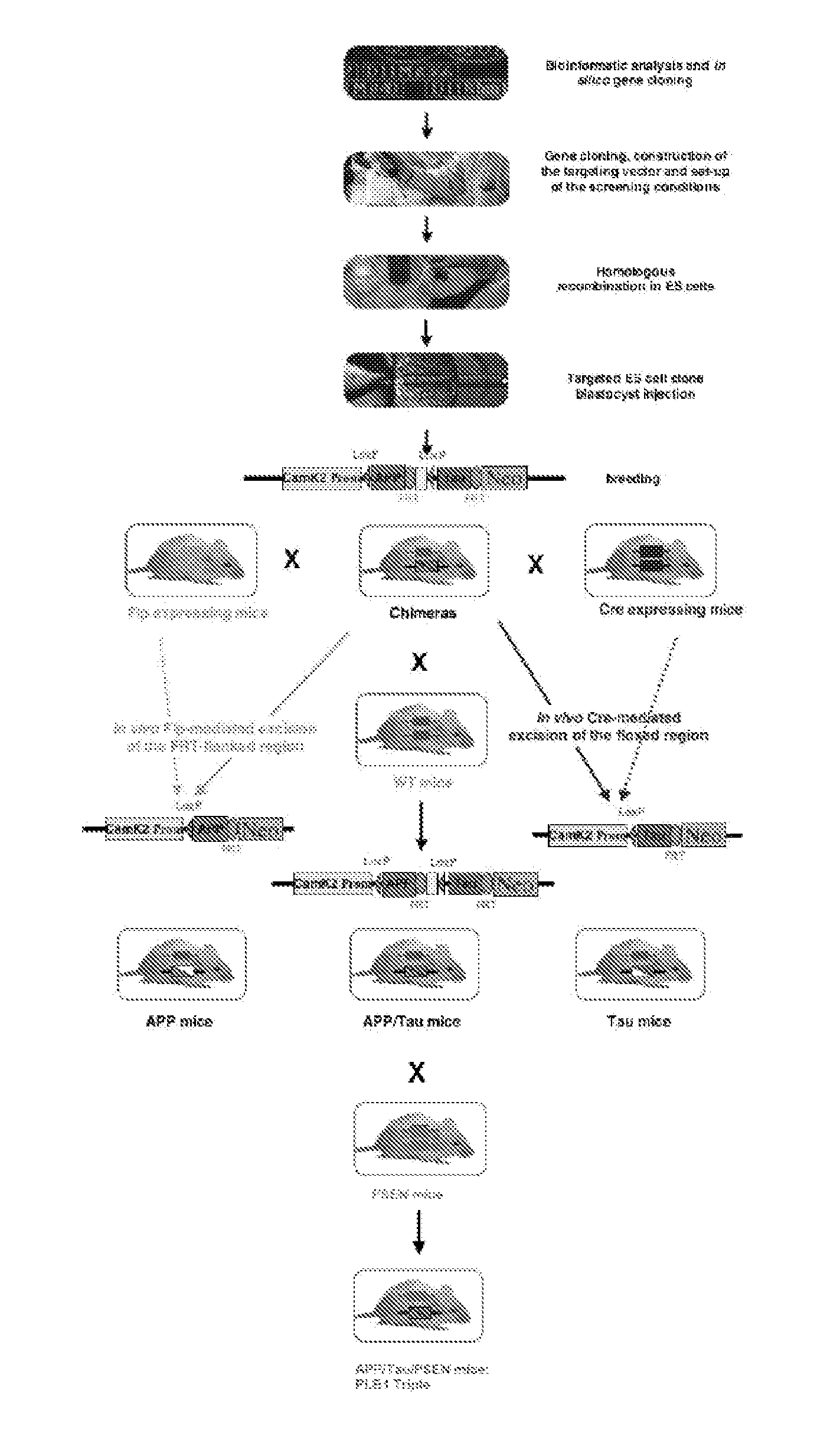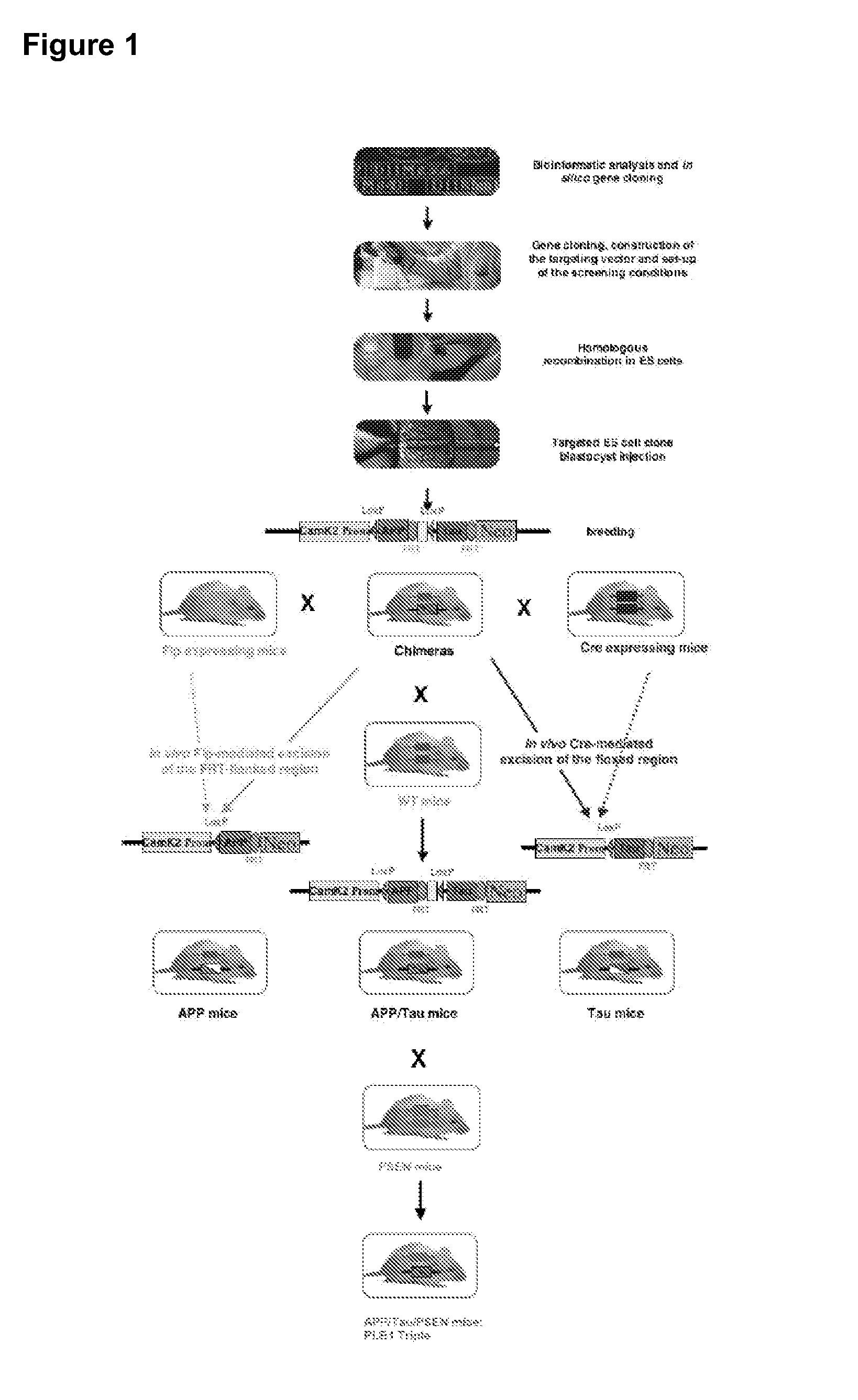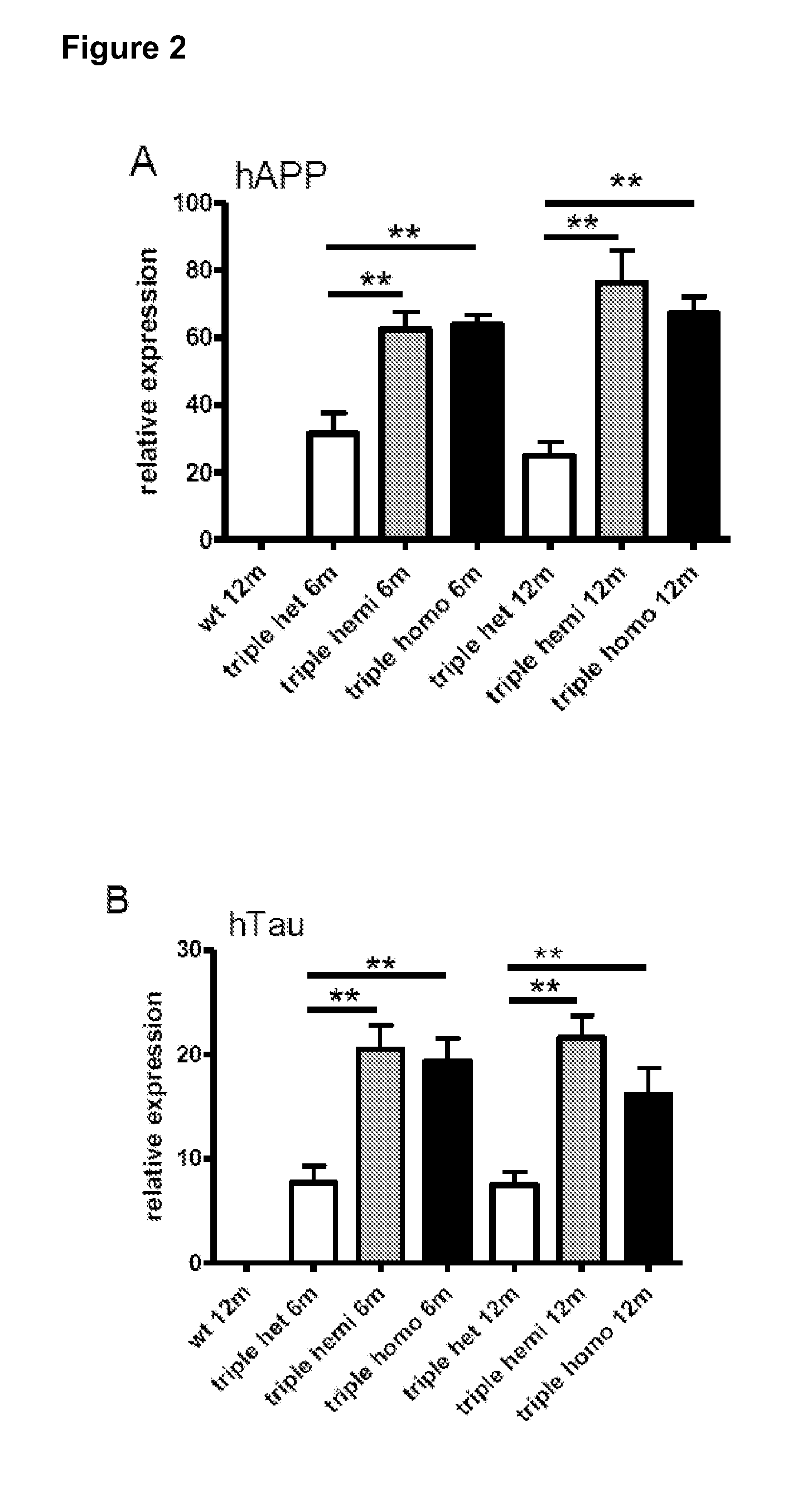Animal model, and products and methods useful for the production thereof
a technology of animal models and products, applied in the field of transgenic rodents, can solve the problems of major breakthrough or development of treatment strategies, difficult age studies, and inability to fully understand, and achieve the effects of avoiding the negative impact of the endogenous genome, precise comparison of effects, and stable and consistent gene expression
- Summary
- Abstract
- Description
- Claims
- Application Information
AI Technical Summary
Benefits of technology
Problems solved by technology
Method used
Image
Examples
Embodiment Construction
Material and Methods
[0178]Information on APP, amyloid and Tau
[0179]Human inserted transgene APP[0180]APP mRNA sequence used: NM—000484[0181]Protein 770 amino acids[0182]Full length protein glycosylated approx 120 kDa[0183]Amyloid[0184]monomer approx 4 kDa (36 to 42 amino acids—seen on high % PAGE)[0185]dimer 8 kDa[0186]trimer 12 kDa (reference for mono to trimer: McLean et al 1999, Ann Neurol)[0187]oligomer (56 kDa Lesne 2006)
Source abcam
[0188]http: / / www.abcam.com / Amvloid-beta-precursor-protein-antibodv-ab12269.html
[See FIG. 25]
Other Human Forms:
APP:
[0189]751 AA—130 kDa (glycosylated) 110 immature
695 AA—90 kDa
[0190]Amyloid same as above as these isoforms only differ in NTD (Kunitz and Ox sequences)
Sequence Similarity Between Human and Mouse 97% (Shin&Ji 2007)
[See FIG. 26]
[0191]Size of amyloid varies at CTD—1-42 supposedly most toxic one 1-40 more abundant Ratio of the two shifted towards more 1-42 in AD
Human Inserted Transgene Tau
[0192]Tau mRNA sequence used NM—016835.3[0193]Protein...
PUM
| Property | Measurement | Unit |
|---|---|---|
| Electrical resistance | aaaaa | aaaaa |
Abstract
Description
Claims
Application Information
 Login to View More
Login to View More - R&D
- Intellectual Property
- Life Sciences
- Materials
- Tech Scout
- Unparalleled Data Quality
- Higher Quality Content
- 60% Fewer Hallucinations
Browse by: Latest US Patents, China's latest patents, Technical Efficacy Thesaurus, Application Domain, Technology Topic, Popular Technical Reports.
© 2025 PatSnap. All rights reserved.Legal|Privacy policy|Modern Slavery Act Transparency Statement|Sitemap|About US| Contact US: help@patsnap.com



